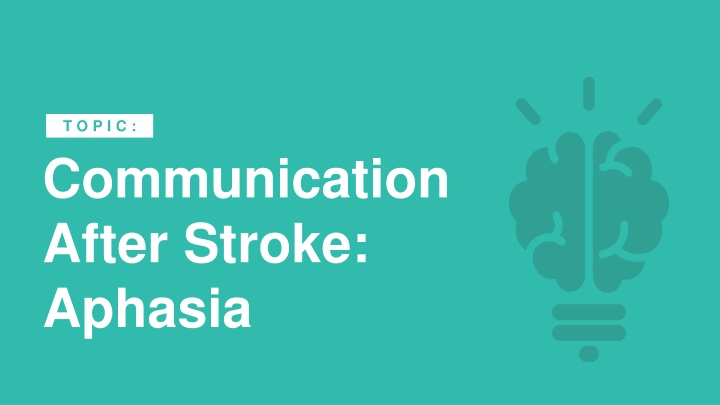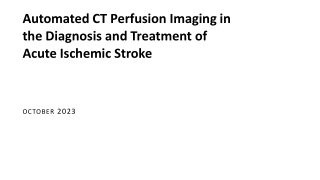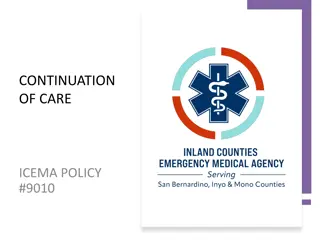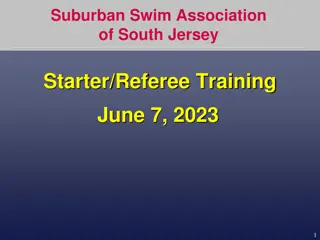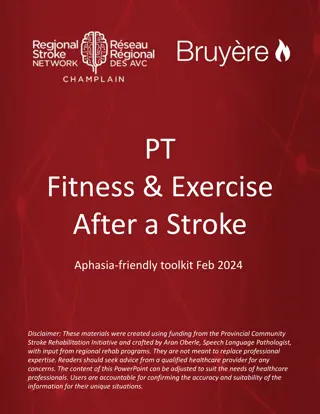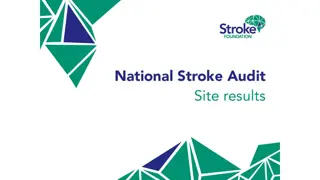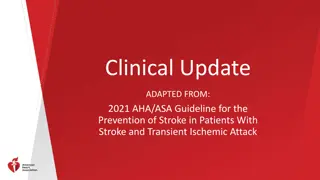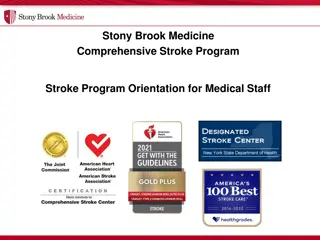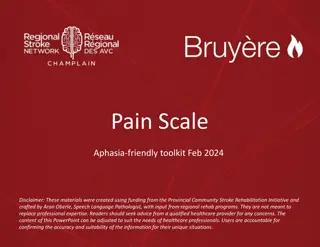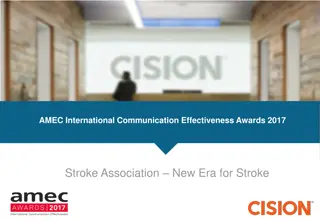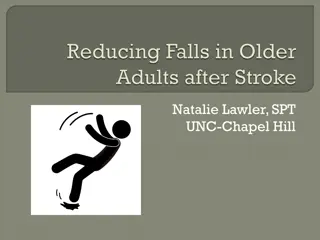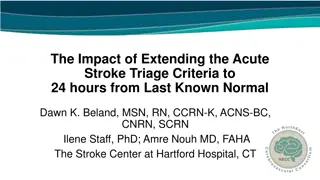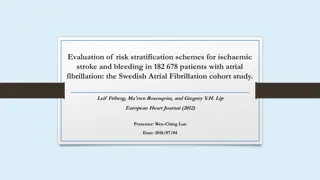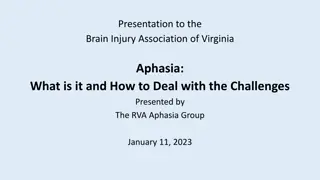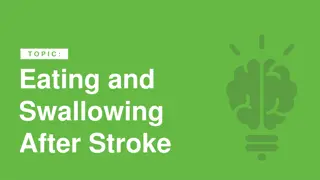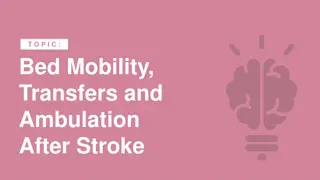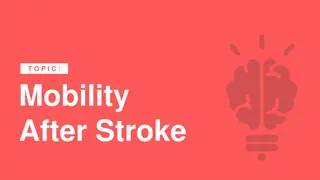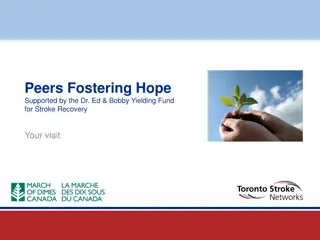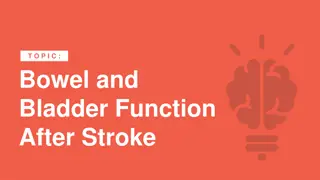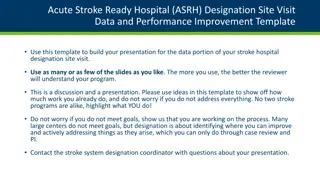Communication After Stroke: Aphasia
Communication difficulties are common post-stroke due to aphasia, impacting speaking, reading, writing, and comprehension. Learn about types of aphasia and smart tips to improve interactions and quality of life.
Uploaded on Feb 23, 2025 | 0 Views
Download Presentation

Please find below an Image/Link to download the presentation.
The content on the website is provided AS IS for your information and personal use only. It may not be sold, licensed, or shared on other websites without obtaining consent from the author.If you encounter any issues during the download, it is possible that the publisher has removed the file from their server.
You are allowed to download the files provided on this website for personal or commercial use, subject to the condition that they are used lawfully. All files are the property of their respective owners.
The content on the website is provided AS IS for your information and personal use only. It may not be sold, licensed, or shared on other websites without obtaining consent from the author.
E N D
Presentation Transcript
T O P I C : Communication After Stroke: Aphasia
Communication After Stroke: Aphasia Communication problems are common after a stroke Aphasia is a common communication impairment and can affect a person s ability to: speak read write understand what others say 2
Communication After Stroke: Aphasia What you should know: 1 in 3 people with stroke will have aphasia Aphasia impacts a person s ability to use language Aphasia does NOT impact intelligence Communicating with someone with aphasia can take time and effort Aphasia can lead to frustration, social isolation and depression Better communication can improve care and quality of life 3
Communication After Stroke: Aphasia A person may have one or both of the following types of aphasia: Receptive Aphasia - trouble taking messages IN; difficulty understanding what is heard or read Expressive Aphasia - trouble getting messages OUT; difficulty speaking or writing 4
Communication After Stroke: Aphasia Smart Tips: Ensure adequate lighting Reduce noise and distractions Ensure hearing aids, glasses and/or dentures are in use Position yourself face to face at eye level Plan for extra time and be patient 5
Communication After Stroke: Aphasia Make sure the topic of conversation is very clear Speak in short simple sentences Ask YES/NO questions Offer choice 6
Communication After Stroke: Aphasia Speak slowly and clearly Use a normal tone and volume Acknowledge competence I know you know Include the person with aphasia in conversations Avoid interrupting 7
Communication After Stroke: Aphasia Use gestures Write down key words Have them point to words or pictures 8
Communication After Stroke: Aphasia Repeat what you think the person said Pay attention to body language and facial expressions Acknowledge frustration Offer to try again later 9
Communication After Stroke: Aphasia Seek extra support Speech Language Pathologists are skilled in communication For more information about Aphasia, please visit the Aphasia Institute https://www.aphasia.ca/ Smart Tips for Stroke Care (2023) was created by members of the Regional Stroke Networks of Ontario. This material may be shared without permission from the authors, without changes and with source credited. 10
